From Studio to Stage: Mount Kimbie
It’s been well over two years since Mount Kimbie‘s debut LP, Crooks and Lovers, landed […]
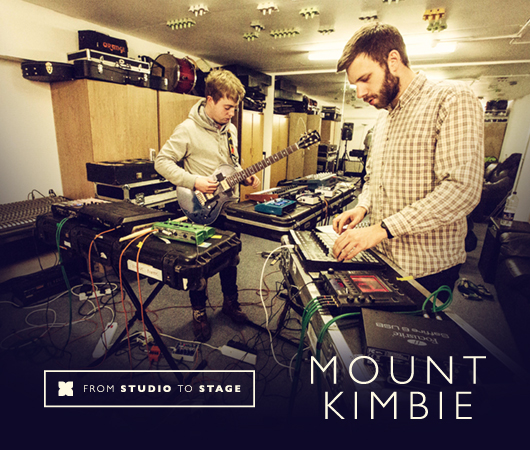
It’s been well over two years since Mount Kimbie‘s debut LP, Crooks and Lovers, landed and—in the process—helped define the UK’s then-nascent “post-dubstep” sound. Partially because of its status as a genre-defining album, Crooks and Lovers also launched the duo of Dominic Maker and Kai Campos into the midst of a constant touring schedule. The London-based pair travelled around the world multiple times over since the release of its first full-length, a rather unprecedented feat for a pair of bedroom producers tinkering with a considerably understated strain of underground electronic music. Now, with the impending release of Mount Kimbie’s sophomore LP, Cold Spring Fault Less Youth, Maker and Campos have been busy preparing a fresh live set focused on their new material, incorporating for the first time a third live member in drummer, percussionist, and jack-of-all-trades Tony Koos. Because the pair’s production studio is currently in a state of limbo, Maker and Campos invited XLR8R out to its East London rehearsal space to take a look at the pieces which make up their current touring rig, and gave us some insight into how they translate their studio creations into a live performance.
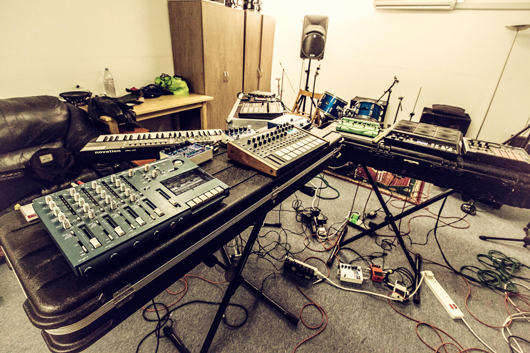
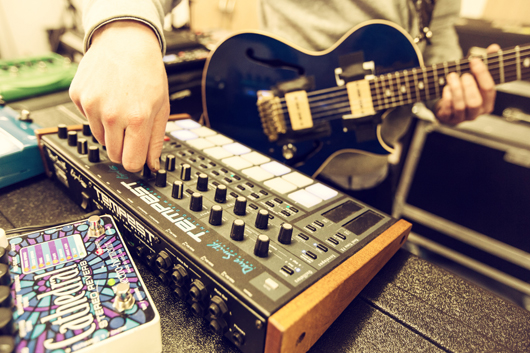
XLR8R: When you were making Crooks and Lovers, you were probably not very concerned with being able to translate the record’s songs live. But now with the new record, were you conscious of how the songs on Cold Spring Fault Less Youth would translate to the live arena while you were producing them?
Dominic Maker: We tried to not let that creep into our mindset when we went down to record, but naturally, we’d be making a few things and think, “That’s going to be amazing in the live set.” Really, once the record was done, figuring out how to do these things live came to the forefront. At the moment, we’re still going in and trying to figure out exactly how we can achieve what we want onstage. It’s really good fun having new songs and just a new bank of material to play out. We played the old stuff so much that it’s really been a breath of fresh air.
You ended up touring your last record for well over a year, right?
DM: Yeah, it was about two years. By the time we finished, I couldn’t believe those songs had such long legs.
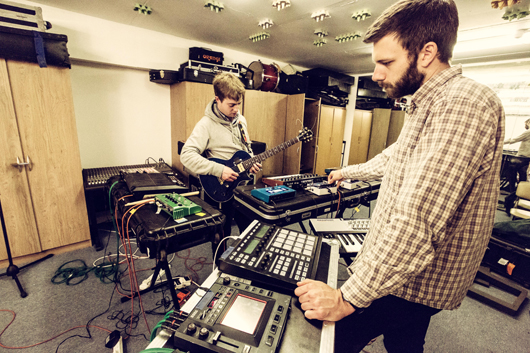

Where do you start the process of translating the recorded songs to a live performance?
Kai Campos: Over the course of doing Crooks and Lovers and turning that into something to play live, we were trying to figure out how we could turn what is essentially static, on/off sample triggering into something that was more expressive. We started to seek out pieces of gear like the Roland SPD-S, which allowed us to assign what happens [to a sound] within a range of how hard or light we hit the pad. Those were the sort of small things that actually had quite a big impact on how we could perform and get into the music. Having done a lot of that for the last record, we were a bit quicker this time at knowing how different parts would work on different pieces of equipment. There are some new pieces we’ll be using with the new material, too. [For example,] there are some tracks that were made with the Tempest drum machine, so we just decided to take it out with us live and use that in the same way we did when we were making the music, really. On the record, we used a four-track tape machine, as well, recording parts to that just to see what it sounded like when we brought [what had been recorded] back into the track. In a couple of cases, that sound really brought something different to the song, so we’ve incorporated that into the live setup. On the four channels are the different arpeggios that were recorded in before. So, we’re using a pre-recorded sound, but the expression comes from the fact that all the arpeggios are slightly out of time with each other, and so you’re forced to build something new from it. But we try not to use gear just for the sake of it. We only add something to our set if it serves a purpose that the existing equipment can’t accomplish. Everything up there is totally vital to the sound.
DM: Yeah, but then we had a show in Moscow on Saturday, and we forgot one of the fucking tapes. [laughs]
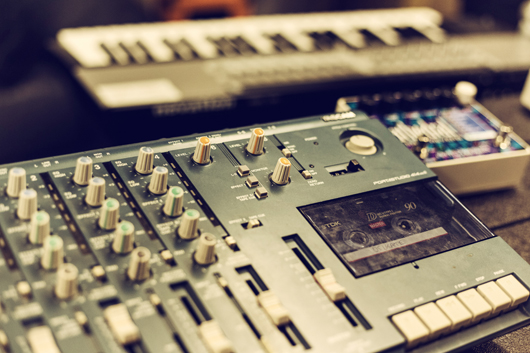
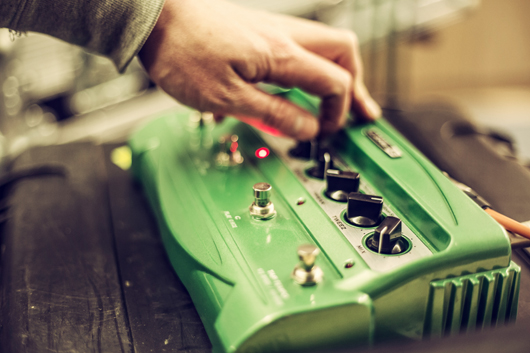
There seems to be a lot of equipment that you use on stage that can’t be synced—the tape machine, the pedals, etc. Are there any pieces that sync up together and talk to each other via MIDI as part of your setup?
KC: Actually, nothing has been MIDI synced. It’s been like that from the beginning, just because we didn’t know how to do it and really just didn’t want to get involved in MIDI too much. Now, we’ve just gotten used to having it that way.
DM: At one point we had considered giving our drummer a click track, but really there’s no electronic syncing of sound at all. [Our drummer] Tony Koos is becoming, rhythmically, the base of everything, and we play around him, so insuring that he is tight is the main thing.
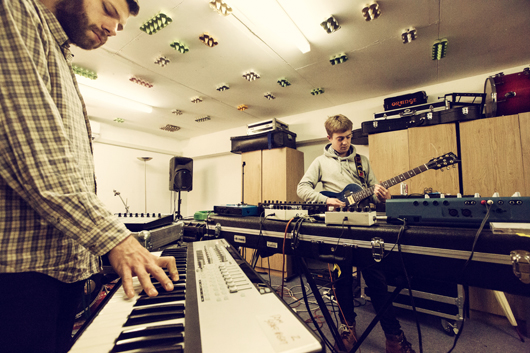
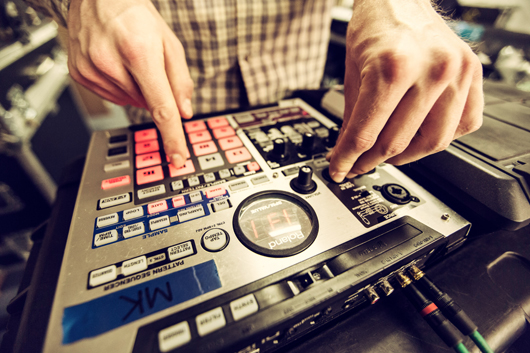
How long have you guys been incorporating a live drummer into the set?
KC: We did our first show with him toward the end of last year, and then he’s been involved in rehearsals of the new material.
DM: He uses the acoustic drums a bit, and there’s an SPD-SX pad that he uses. He’ll also play bass guitar and a bit of keys—he’s quite versatile in that respect.
KC: In terms of the music not being synced to any kind of tempo map: Quite a lot of the time in our old sets, Dom and I were trying to control four or five pieces of gear and still be in time with each other, which didn’t leave much room for anything else. Now, with the three of us, it’s given Dom and I more space mentally and physically on stage. We can now get more involved in the one or two things that we are in control of at any one time. Ultimately, I think that will be better for the performances.
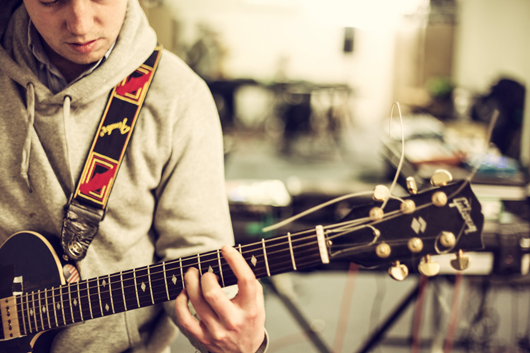
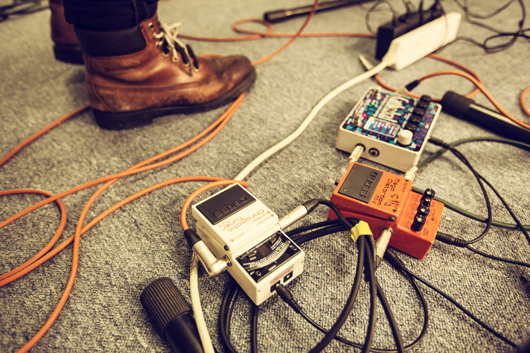
You’re trying to make more time for you two to really be able to get into the music, rather than just making sure everything is working right and all in time.
KC: Yeah.
How about when, say, the Tempest is running a sequence, does Tony follow along somehow, or is he adding rhythmic parts on top at that point?
KC: When we brought him in, we were quite reluctant to needlessly put drums on top of things; you see that with electronic music sometimes and it can feel like a cheap way of saying, “We’re a live band.” There is quite a lot of the set where he’s not playing acoustic drums. There is definitely some stuff that is meant to come from a drum machine, and I don’t see the point in changing that just to make it feel more “live.”
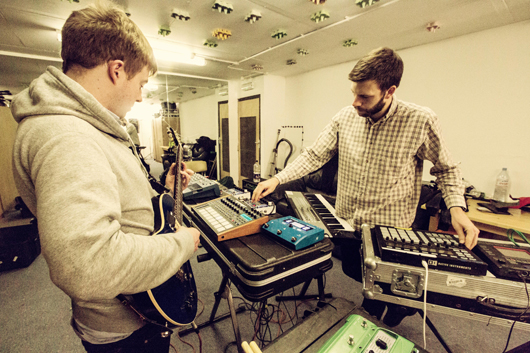
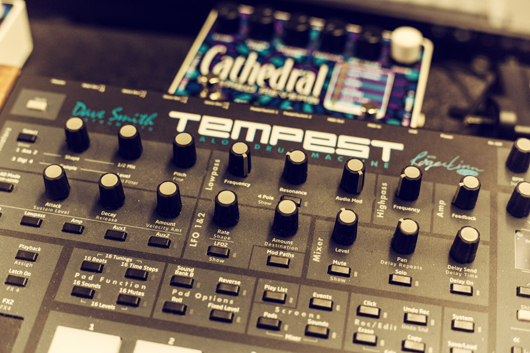
Especially now with having a drummer involved, are there any moments that are left up to improvisation in your sets?
DM: At the moment, when we’re on stage, everything has a specific arrangement, but we’ve been loving having a drummer. It’s so fun to jam stuff at the end of songs. The other day, we were playing a track, and the USB cable came unplugged so that the notes it was triggering were just held indefinitely. We just went off on this crazy tangent. I don’t know what sort of style we were going for. [laughs]
KC: It was maybe a housey, Krautrock thing? [laughs] There have been a few of those moments during rehearsals. I think we all need to build up our confidence in regards to playing live though—we haven’t played a lot recently. I hope by the end of the summer we can be in tune with each other enough that those crazy tangents aren’t just a piss take. We’d like to try to incorporate those sort of things live, but I don’t think we’ll start pulling it out until we are 100% confident with each other. When considering the level of musicianship on display, it can be a scary thing to be onstage, but I think the thing that excites people when they are watching someone improvise is that there is a sort of fear. I think at some point we’ll probably have to take the plunge and just go for it.
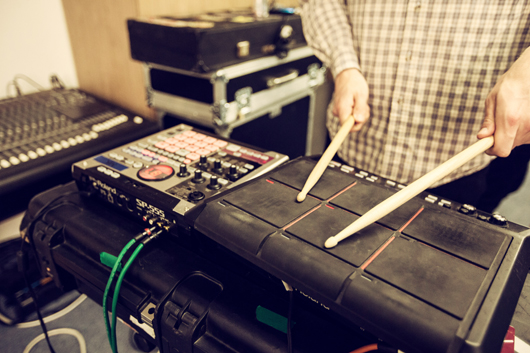
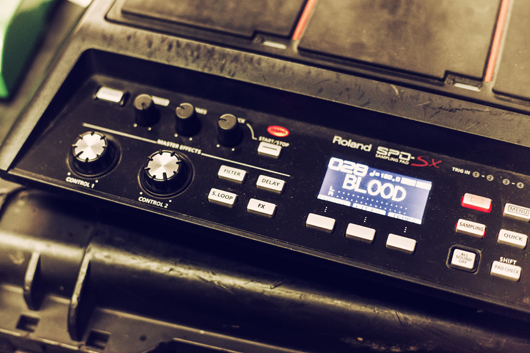
Do each of you have specific roles in the live performance that perhaps mirror the roles you take while producing?
DM: Well, we sort of have our own stations, but with the new songs, we’re just constantly interchanging between these two places. When we were recording, everything we use live was just set up—so pieces like the Tempest would just be sitting there waiting to be used. When we’re producing, we always start with the individual ideas we came up with on our own—which we did for the first few months [of the recording sessions]—then we come together and work whatever ideas we are both keen on, the bits we felt passionately about and think are strong enough to make a song. When it comes to then translating those ideas to a live show, it’s about dividing things up so that there is, like we said before, room to be expressive with it. If something needs to simply just be triggered, then we trigger it, and if that frees one of us up for another aspect of the song, then great. It’s really not that calculated. It’s more of a natural thing.
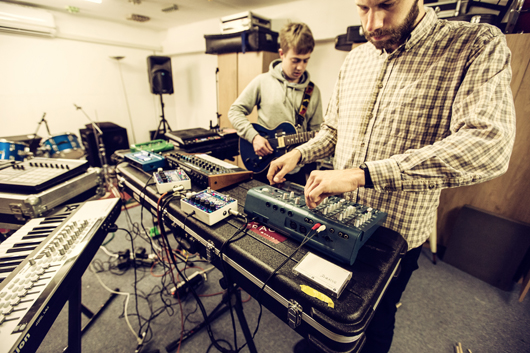

What does it take to make you feel like you really have a song down? Do you find there’s a lot of experimenting?
DM: Well, just the idea of playing that recent show in Moscow was a bit of a wake up call. All of these recent, sort of preliminary shows have been about just getting stage time and getting used to being in a testing environment. I felt before that we were really ready, and then we went on stage and I realized we weren’t ready. Being in front of an audience, you just instantly notice the moments that need to be changed and the areas that you need to work on.
KC: Yeah, rehearsal is really so far away from actually performing.
DM: You can’t really recreate that feeling. Our ears are much better tuned now, and we can know very quickly what the problem is and what we can do to make it better. Before, we probably would have just gone on with it.
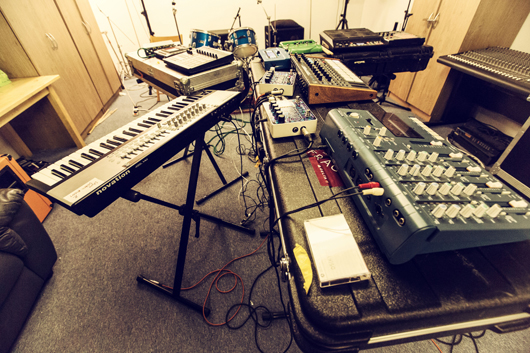

There are some electronic artists that maybe don’t like playing live as much as they enjoy making their tracks or just DJing. Do you enjoy playing your music live? Would you say it’s as rewarding as the process of making the actual songs themselves?
DM: Oh yeah, definitely. Sure, we’ve had struggles on the road—who doesn’t?—but nothing beats the instant satisfaction you get when you play a really great live show. We felt that, with the music we make, it just wouldn’t come across right if we were DJing it. DJing in the future might not be out of the question, but we would have to be really good at it, in the same way we’ve dedicated ourselves to our live show.

